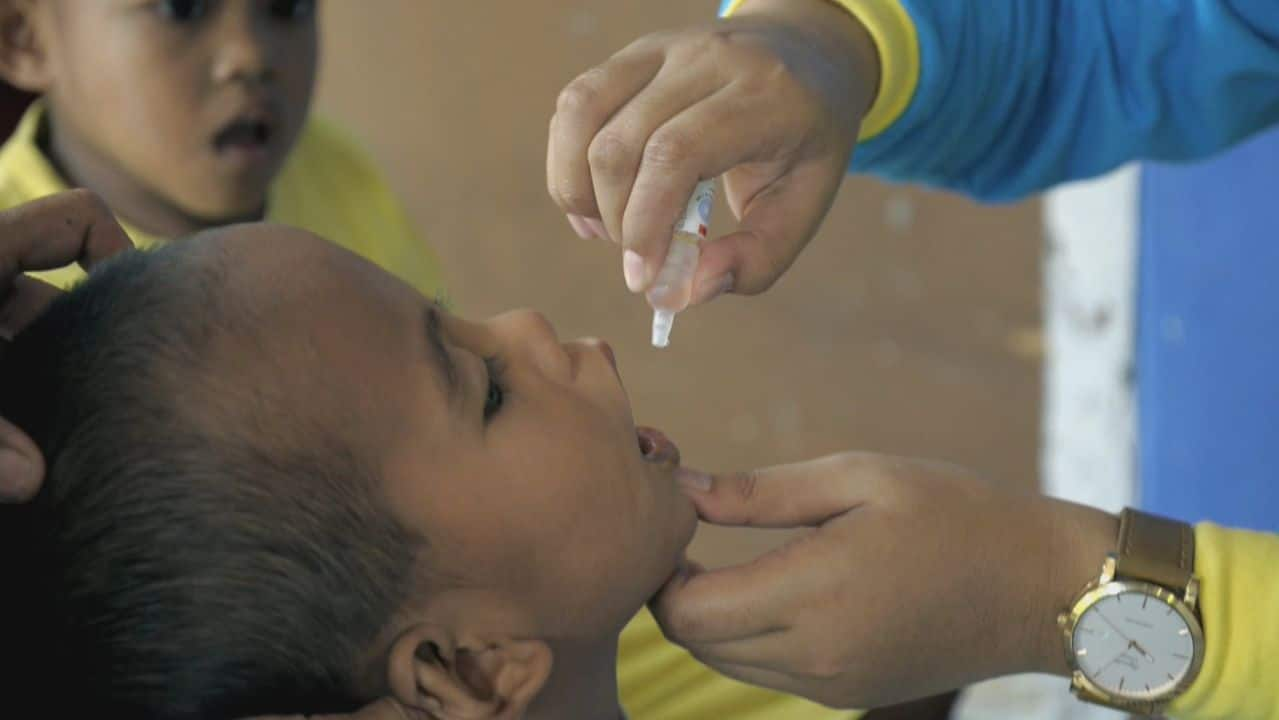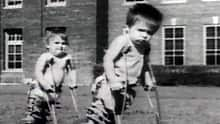Polio, a potentially disabling virus that's long been forgotten in many parts of the world, is now circulating in parts of the U.S. and U.K., on the heels of an outbreak in Israel — prompting health officials to launch vaccination campaigns to ensure the public is protected.
Even in Canada, a country free of polio for the last two decades, medical experts say it's a wake-up call that the virus still poses a threat to anyone who remains unvaccinated, given polio's ability to spread through global travel networks and wastewater systems.
On Wednesday, British health authorities announced they will offer a polio booster dose to children aged one to nine in London, after finding evidence the virus has been spreading in multiple regions of the capital. Britain's Health Security Agency said polio virus samples were found in sewage water from eight boroughs of London, but there were no confirmed infections.
Still, the agency's analysis showed transmission has likely "gone beyond a close network of a few individuals."
"We know the areas in London where the poliovirus is being transmitted have some of the lowest vaccination rates," said Dr. Vanessa Saliba, a consultant epidemiologist at the U.K. Health Security Agency.
WATCH | Hundreds could be infected with polio in New York state, officials say:
The agency said it was working closely with health authorities in the U.S. and Israel, as well as the World Health Organization, to investigate the links between polio viruses detected in those two countries.
In July, Israel announced a recent outbreak of polio infections appeared to be under control, after multiple people became infected, including a Jerusalem girl who was paralyzed and now requires rehabilitation, according to the Jerusalem Post.
More recently, in the state of New York, one unvaccinated young adult suffered paralysis after a polio infection in Rockland County — an area known for low vaccination rates — which marked the first case reported in the U.S. in nearly a decade.
Vaccination campaigns are now underway as samples of the virus were also detected in the wastewater of both Rockland and another county, just north of New York City. Officials also say hundreds more people may already be infected.
"The scope may be even much larger than we can even fathom or imagine," said New York-based immunologist Dr. Purvi Parikh.
"Because vaccines have become the victim of their own success, we don't see it — so we may not even realize what the spread of polio is, because for the majority of us who are vaccinated, it doesn't really [affect] us."
Outbreaks do still happen in certain countries
Before mass vaccination campaigns largely wiped out polio from circulation in higher-income countries like Canada between the 1950s and early 1990s, the virus was known for sparking outbreaks and striking children, causing paralysis or death in some cases.
Even now, war, poverty, and social unrest make it difficult to achieve eradication in many countries around the world. Outbreaks remain common in Afghanistan, Pakistan, and parts of Africa.
Parikh said polio cases aren't entirely a surprise in any community where vaccination rates are lower, either due to anti-vaccine sentiments or disruptions to routine immunizations during the COVID-19 pandemic.
"Now the concern is, some of these infectious diseases that we haven't seen in nearly decades may actually come back and pose to be a problem," she said.
Part of the challenge in wiping polio out around the world actually comes from the vaccination approach used in certain regions. While higher-income countries now use an inactivated poliovirus vaccine given as a traditional shot, others rely on a weakened poliovirus that's easy to administer by mouth.
Both types of vaccines helped curb global transmission and, crucially, neither one is capable of giving someone a case of symptomatic polio.

However, since the oral version winds up in the stomach, it's eventually flushed out of the body into wastewater systems — where, over time, the virus can evolve back into a form that's able to cause disease.
"So if you have a shedding of that particular virus and transmission of that in a community, it can cause a polio outbreak," said Dr. Isaac Bogoch, an infectious diseases specialist with the University Health Network in Toronto.
"And in fact, if you look at many parts of the world, there have been small outbreaks of vaccine-derived polio."
'Polio is only a plane trip away'
Lab testing conducted on the case in New York, for instance, linked the virus samples to transmission from someone who'd received the oral vaccine, which hasn't been used in the U.S. since 2000. "This suggests that the virus may have originated in a location outside of the U.S. where [the oral vaccine] is administered," officials said.
In London, out of more than 100 polio samples identified in sewage, most were vaccine-like virus, according to the UK Health Security Agency, while others had enough mutations to be more like "wild" polio that can cause serious health impacts.
Global travel between countries with high rates of polio transmission and regions with lagging vaccination rates could pose a problem going forward, said Wes Hazlitt, a Winnipeg polio survivor, advocate, and president of the Post-Polio Network in Manitoba.
"Polio," he added, "is only a plane trip away."
Another challenge in tackling outbreaks stems from this virus's ability to spread undetected, experts say, with most people unaware they're even infected — leaving countries vulnerable to slow-growing outbreaks before any patients show up with major disease and paralysis.
"Most people will have no symptoms or mild symptoms, but about one in 200 or so will have significant symptoms," Bogoch said.
WATCH | 1953, the year polio last stalked Canada:
Under-vaccinated communities remain at risk
So when it comes to experiencing a future polio outbreak, how at risk is Canada? That all depends on vaccination rates both now and in the future, multiple medical experts said.
"If you start not vaccinating the kids from the primary series — like the measles, mumps, rubella, diphtheria, tetanus, pertussis, polio — then you risk those diseases coming back," warned Dr. Anna Banerji, a pediatrician and infectious disease specialist in Toronto.
A vast majority of the Canadian public has been vaccinated against polio, and while immunization rates among children ebb and flow, the latest available federal data from 2017 shows roughly 90 per cent of toddlers had all three required polio shots.
But that coverage isn't uniform across the country. Polio vaccination rates were below 90 per cent in British Columbia and Manitoba, and close to just 80 per cent in Nunavut, while uptake in specific communities can vary and may have been disrupted by COVID-19 school closures.

"We do have our issues in Canada, with under-vaccinated communities for a variety of reasons, and a lot of this predates COVID-19," said Bogoch, adding many public health teams across the country did offer immunization programs throughout the pandemic to get children caught up.
While pockets of the population could remain vulnerable to polio infection, Fatima Tokhmafshan, a researcher and geneticist at the Research Institute of the McGill University Health Centre, said most Canadians shouldn't be overly concerned.
"If you see something circulating, it's good to be on your guard, but not panicking," she said.
"So it's important to keep an eye out. And reach out to your network, to your friends, your family — make sure everybody's vaccinated."
Polio largely vanished thanks to vaccines. So why is it now back in more countries? - CBC News
Read More



No comments:
Post a Comment